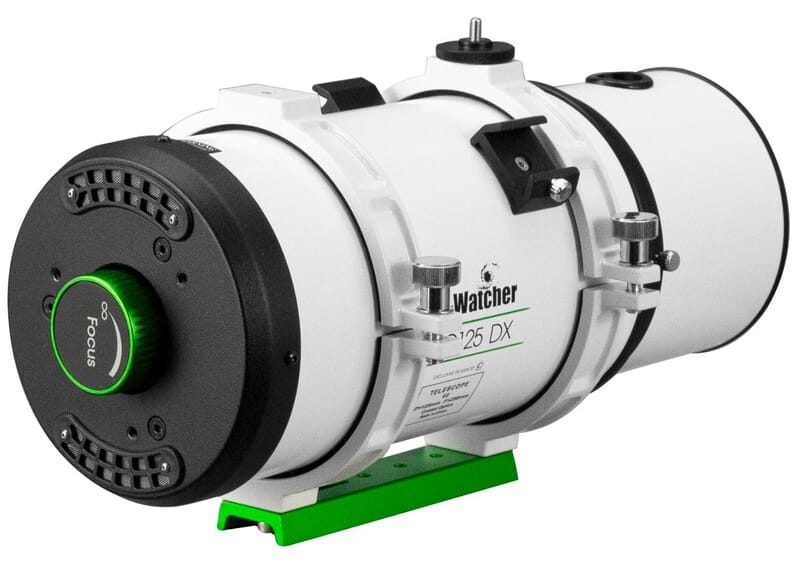Astrographs for Astrophotographers

What are Astrographs
An astrograph, also known as an astrographic camera, is a specialized telescope designed primarily for astrophotography – capturing images of celestial objects. Unlike standard telescopes, which can be used for both visual observation and imaging, astrographs are optimized to achieve the best possible image quality for photographic purposes.
Astrographs typically have short focal lengths and therefore fast focal ratios (low f-numbers, often between f/2.8 and f/5). This allows them to gather light efficiently and capture images with shorter exposure times, crucial for faint deep-sky objects.
These wide-field telescopes are designed to capture a broad expanse of the night sky, making them suitable for wide-field astrophotography of nebulae, galaxies, and star clusters.
To ensure sharpness across the entire image, astrographs are engineered to produce a flat and distortion-free imaging field, especially important when using large CCD cameras or full-frame sensors.
These telescopes feature advanced optical designs to minimize aberrations like coma, astigmatism, and chromatic aberration, resulting in sharp, clear, and well-corrected images, particularly at the edges.
They are built with durable and thermally stable materials, like carbon fiber, to minimize focus drift caused by temperature changes during long exposure times.
While astrographs excel at astrophotography, many models can also be adapted for visual observation, particularly those with high-quality optics and appropriate eyepieces. However, their primary purpose and design optimizations are focused on achieving high-quality images of celestial objects for scientific research or aesthetic purposes.
What Makes An Astrograph Special for Cosmic Exploration
Astrographs stand apart from conventional telescopes in their singular purpose: capturing detailed astronomical images. While many telescopes try to balance visual observation with photographic capabilities, astrographs make no such compromise. Their optical designs prioritize a wide, flat field of view specifically engineered to pair with modern camera sensors. This specialization allows astrographs to produce significantly sharper images across the entire frame—a crucial factor when photographing extensive deep-sky objects like nebulae or galaxy clusters.
The history of astrograph telescopes dates back to the late 19th century, when astronomers first adapted telescopes specifically for photography. These early instruments helped create the first comprehensive star catalogs and led to numerous astronomical discoveries. Today’s astrographs benefit from over a century of optical refinement and incorporate advanced materials and designs that early astronomers could only dream of. Explore Scientific has continued this tradition of innovation with its modern astrograph offerings, combining classical optical principles with cutting-edge technology.
Perhaps the most compelling aspect of modern astrographs is their accessibility. What once required massive observatory instruments can now be achieved with portable systems in your backyard. This democratization of astronomical imaging means anyone with passion and patience can capture images rivaling those taken by professional observatories just decades ago. The cosmic frontier has never been more accessible to explorers armed with the right tools and knowledge.
How Astrographs Differ from Regular Telescopes
The fundamental difference between these and regular telescopes lies in their design priorities. Traditional telescopes are optimized for visual observation, focusing on delivering bright, high-contrast views to the human eye. Astrographs, conversely, are engineered specifically for photography, with optical systems that produce a flat focal plane across the entire field of view—crucial when working with flat camera sensors. This distinction means astrographs sacrifice some visual performance to achieve superior photographic results.
Regular telescopes often suffer from field curvature, where the focal plane forms a curved shape rather than a flat surface. This means that when observing visually, the center of the view appears in focus while the edges might not—a limitation the human eye rarely notices when looking through an eyepiece. However, this same issue becomes problematic when attaching a camera with its flat sensor, resulting in stars appearing sharp in the center but increasingly blurred toward the edges of the frame. Astrographs incorporate additional optical elements specifically to correct this field curvature.
Another key difference lies in the focal ratio. Many visual telescopes operate at relatively “slow” focal ratios (f/8 to f/12), which provide higher magnification beneficial for planetary and lunar observation. Astrographs typically feature “faster” focal ratios (f/4 to f/7) that allow shorter exposure times and wider fields of view—ideal for capturing faint deep-sky objects like nebulae and galaxies. This faster optical design represents one of the astrograph’s most significant advantages for serious astrophotography.